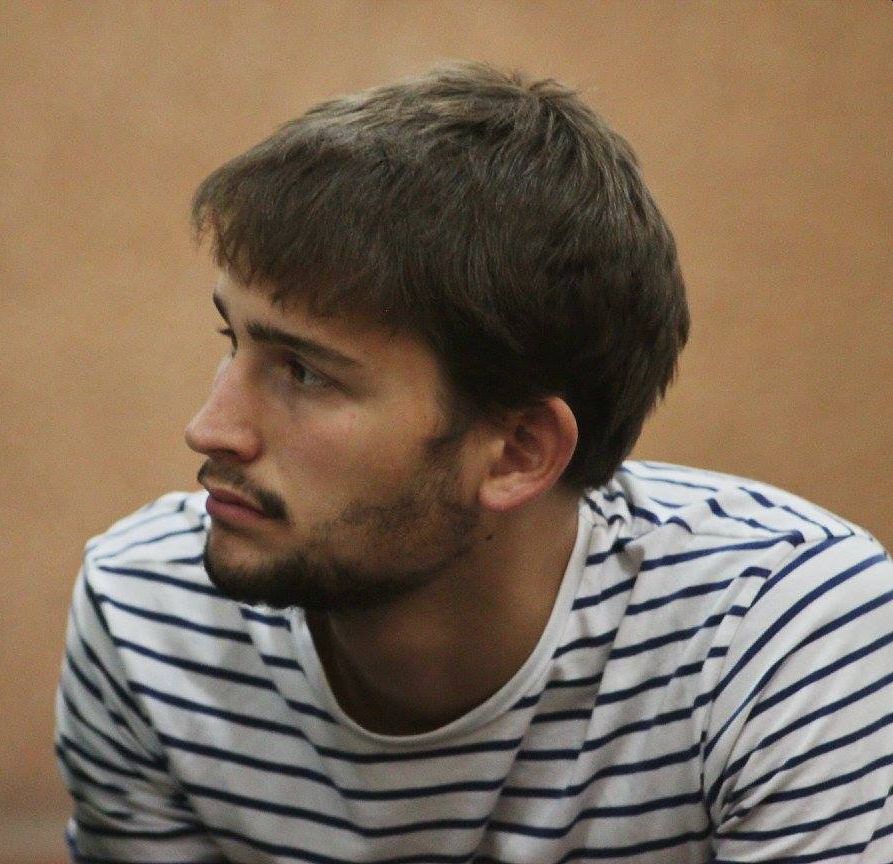Whose Land, Their Art? Debates over the Tendencies Exhibition Series (1980–81)
Money and Morals Then and Now
While at first glance the Artists’ Unions seem to be fossils of Eastern Europe’s state-socialist past, in fact they are still living with us, in several ways. First of all, they persist in the dream of a political utopia: after the short belle époque of welfare states, the current precarization of the cultural sector—especially affected by the COVID-19 crisis—provokes debates on the possibility of cultural workers’ unionization even in Eastern Europe. Secondly, while new institutions emerged after the political transition of 1989, the Artists’ Unions did not completely lose their importance as integrators of cultural producers, or as interfaces between those producers and the state. Even more importantly, new institutions, such as the Hungarian Academy of Arts, established in 2011, often follow the centralizing and institutionalizing model of the socialist Artists’ Unions.

Cover of the exhibition series’ first catalogue: Új művészet 1970-ben [New Art in 1970] Courtesy of the MaNDA (Hungarian National Digital Archive).
Through a close consideration of the Tendencies exhibition series, I will examine the HUFAA’s interface position between the state, individual authors, and their factions. This exploration shows how Artists’ Unions functioned as heterogeneous entities under state-socialism by providing a certain space of maneuver for avant-garde tendencies. It also demonstrates how avant-garde authors, despite their widespread anti-political sentiments,(Klara Kemp-Welch, Antipolitics in Central European Art (London: I B Tauris, 2014).) could capture the infrastructure of the HUFAA in the early 1980s and turn their dissident status into symbolic capital within the state-infrastructure.

Cover of the exhibition series’ second catalogue: Másodlagos realizmus [Secondary Realism]. Courtesy of the MaNDA (Hungarian National Digital Archive)
The prominent role of the state in these debates is not accidental. The post-WWII East European regimes were striving to construct socialist societies in a statist way, by strengthening the state apparatuses. Moreover, as some have argued,(Andrew C. Janos, East Central Europe in the Modern World: The Politics of the Borderlands from Pre- to Postcommunism(Stanford: Stanford University Press, 2000).) in the semi-peripheral regions of the global capitalist system, states play a profound role in organizing culture, economy, and society. The prominent position of the state in Central-Eastern Europe did not exclusively emerge from the characteristics of state-socialism, but it should be understood in the longue durée of social formation of the region, where—in the absence of a powerful bourgeois—modernization projects were often carried out by intellectuals through the state.(For a more detailed analysis, see Cores, Peripheries, and Globalization, eds. Peter Hanns Reill and Balázs A. Szelényi (New York: Central European University Press, 2011); and especially Iván Szelényi’s essay “The Rise and the Fall of the Second Bildungsbürgertum” in that volume, 165–182.) States of Central-Eastern Europe were preserving their central position in the post-socialist transition, often by implementing neoliberal policies that often had their own socialist origins.(Johanna Bockman, Markets in the Name of Socialism: The Left-Wing Origins of Neoliberalism (Stanford: Stanford University Press, 2011).) This outstanding position of the state can result both in the establishment of centralized state-institutions and in the organized boycott of the state; it does not imply a unified, homogenous state. The limited resources available to state-infrastructures for redistribution can thus also create harsher competition among intellectual positions, and the winner more often takes it all.
The Tendencies Exhibition Series (1980–81)

Cover of the exhibition series’ third catalogue: Geometrikus és strukturális törekvések [Geometric and Structural Tendencies]. Courtesy of the MaNDA (Hungarian National Digital Archive).
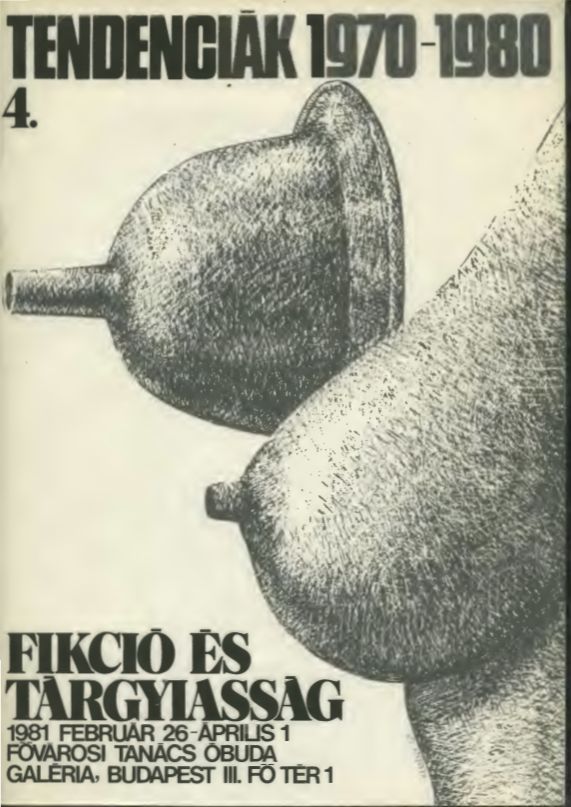
Cover of the exhibition series’ fourth catalogue: Fikció és tárgyiasság [Fiction and Objectivity]. Courtesy of the MaNDA (Hungarian National Digital Archive).
The antagonism between the minor exhibition space and the exhibitions’ great ambitions stemmed from the social positions of the Tendencies series’ organizers. While all ten curators worked in state institutions and were members of the HUFAA, they nonetheless occupied a peripheral position within the field since they were primarily engaged with the neo-avant-garde tendencies of contemporary Hungarian art. At that time, Tendencies was their largest project in institutionalizing neo-avant-garde trends by bringing them under the umbrella of the Union. Therefore, the series provoked a heated public debate in which various factions of the art field clashed. This article analyzes the ways of setting up an avant-garde tradition within the framework of the socialist state-infrastructure and its countermovement, relying on the archival sources of the HUFAA,(I am grateful for the staff of the HUFAA for letting me access their unarranged archive. Due to its unarranged status, I certainly could not find all the possible relevant documents.) on the articles of the public debate that followed the series, and on the interviews that I conducted with the key participants in this debate.(Interview with Péter György, May 14, 2020. Interview with Attila Zsigmond, March 20, 2018. Interview with Ildikó Nagy, November 30, 2016. Interview with László Menyhárt, July 4, 2017. Interview with Márta Kovalovszky and Péter Kovács, July 24, 2018. Interview with Eszter Gábor, November 16, 2016. Interview with Éva Forgács, October 19, 2018.)
Preconditions of the New Struggle

Cover of the exhibition series’ fifth catalogue: Egyéni utak [Individual Ways]. Courtesy of the MaNDA (Hungarian National Digital Archive).

Cover of the exhibition series’ sixth catalogue: Kemény és lágy. Posztkonceptuális tendenciák [Hard and Soft. Postconceptual Trends]. Courtesy of the MaNDA (Hungarian National Digital Archive).
First, in 1979 the Section issued a call for papers on the artistic tendencies of the 1970s(Meetings of the Section of Art Critics at the HUFAA May 22, 1979; January 29, 1980; and November 27, 1980.) and published the best submissions in the HUFAA’s bulletin.((HUFAA 1980/3-4) The competition was won by the neo-avant-garde artists Gábor Attalai, whose essay was republished by the Artpool, here: https://www.artpool.hu/Attalai/Tendenciak/IX.html) The Section’s advocacy was strengthened not only by the weakening position of the salon-exhibitions of the Union but also by one of its members becoming the vice-president of HUFAA. Péter Kovács gave reasonable space to avant-garde tendencies in the Museum of Székesfehérvár, and his partner, Márta Kovalovszky was a co-curator of Tendencies. Kovács’s position stabilized the HUFAA’s institutional support towards the projects of the Section.(Interview with Márta Kovalovszky and Péter Kovács, July 24, 2018.) In his opening speech at the Tendencies’ first exhibition, Kovács tried to de-politicize and historically legitimize neo-avant-garde trends. He warned that the art scene of the present should avoid those scandals in which the greatest artists of the era are humiliated.(Péter Kovács, “Új művészet 1970-ben,” Művészet 10 (1980), 14–15.) This legitimation of the neo-avant-garde as the art of the era was echoed in his essay from the same year, in which he concluded that practically any art produced under socialism is socialist.(Péter Kovács, “A szocialista tendenciák helyzete a mai magyar képzőművészetben,” Művészet 10 (1980), 6–8.)

Júlia Szabó’s article: Emlékek a 70-es évekből [Memories from the 70s] in the 1980/10 issue of the Művészet. Courtesy of the ADT (ArcanumDigitheca).
Debates on the Socialist Public Sphere: “Whose Land, Their Art”?
While the public sphere of state-socialism had its restrictions, it also produced public discourses that were far more complex than the cliché of the top-down direction from the Party headquarters. It is unproductive to sharply contrast these discourses with the freedom of the Western public sphere, where discursive freedom was not complete or pre-given either.(Nancy Fraser, “Rethinking the Public Sphere: A Contribution to the Critique of Actually Existing Democracy,” Social Text 25–26 (1990), 56–80; E. P. Thompson, The Making of the English Working Class (New York: Random House, 1963).) Public debates under Hungarian state-socialism were often centered around questions of consumption, such as the “baby or car debate” of the 1960s (on whether prosperity hinders childbearing) and the “cashew-debate” of the 1970s (on whether socialism should offer consumer goods, such as cashews).(Tamás Dombos and Léna Simányi -Pellandini, “Kids, Cards, or Cashews?” in Communism Unwrapped, eds. Paulina Bren and Mary Neuburger (Oxford: Oxford University Press, 2012), 325–346.) In the field of visual arts, the 1960s and 1970s were marked by several debates on realism and abstraction. The public-debate on Tendencies fit into this trend, because it was primarily centered on the question of whether neo-avant-garde art had a place in socialist cultural production, but also raised the problem of the more and more contoured dissident cultural practices. The debate on Tendencies was neither pre-written—since its critiques were not coordinated—nor without restrictions, as the unwilling participation of some contributors indicates. Not only were criticisms coming from nearly opposite viewpoints, but the defense of the exhibition series also followed two contradictory narratives. We can identify two main threads of criticism towards the series that I will characterize as “Party-loyal elitist” and “emancipatory populist” critiques.
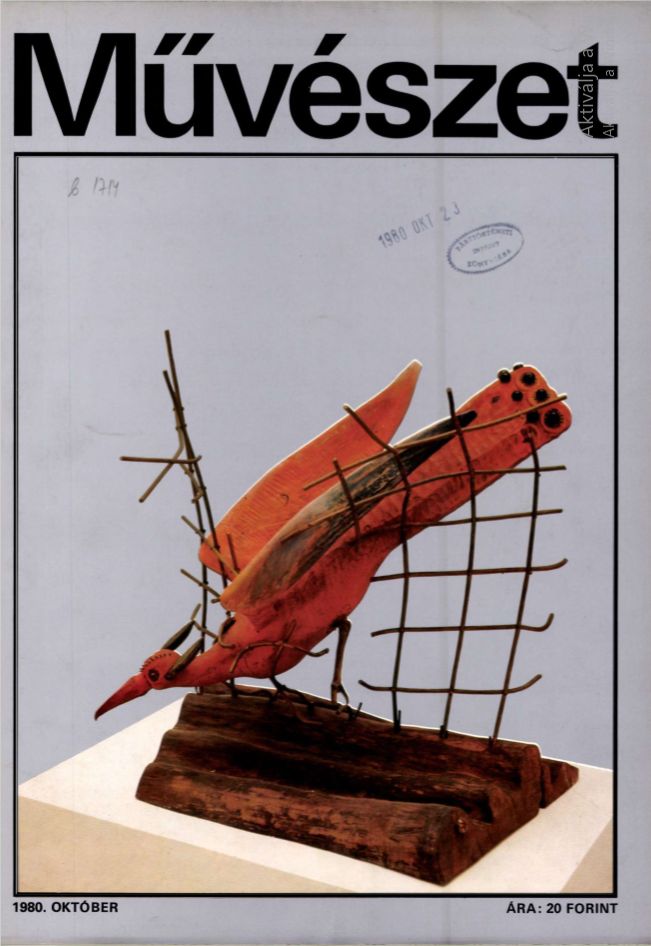
Cover of the 1980/10 issue of the Művészet in which a special section edited by the organizers of the Tendencies. Courtesy of the ADT (ArcanumDigitheca).
The Party-loyal criticism towards Tendencies turned not only against the neo-avant-garde, but against its extra-artistic manifestations and political overtones.(P. Szűcs Julianna, “Akié a terület, azé a vallás,” Kritika 9 (1981), 18–19.; P. Szűcs Julianna, “Válasz György Péter válaszára,” Kritika 12 (1981), 8.) The art historian Julianna P. Szűcs formulated her critique in the pages of the journal Kritika (Critique) under the title “Whose land, his religion.” The phrase was borrowed from the 1555 Peace of Augsburg that stated that the princes of the regions—not the central state of the Holy Roman Empire—had the power to choose between Catholicism and Protestantism within their territory. P. Szűcs—as an art historian specialized in the art of the interwar right-wing totalitarian regime, a surprising focus for a socialist art critic—denounced the Tendencies organizers for applying political rather than aesthetic standards. For her, the exhibition series signaled a certain coup d’etat in the art field since avant-garde authors had produced a hostile exhibition series at the expense and in the framework of the Union. According to her, the problem with Tendencies was not its critical stance but the fact that its critique was “superficial,” because, as she argued, the exhibition series merely reversed the official canon, rather than applying aesthetic standards. Consequently, for her the “whose land, his art” situation—which resulted in the division of the art field according to different interest groups—was not a goal to be achieved, but instead a pessimistic status report on the field. The crucial momentum of P. Szűcs’s argumentation was that while acknowledging that the official canon was not perfect, she still condemned the organizers of Tendencies for creating a double-canon by mirroring the official one. She also accused the organizers of capitalizing upon their dissident status while remaining on the HUFAA’s payroll.
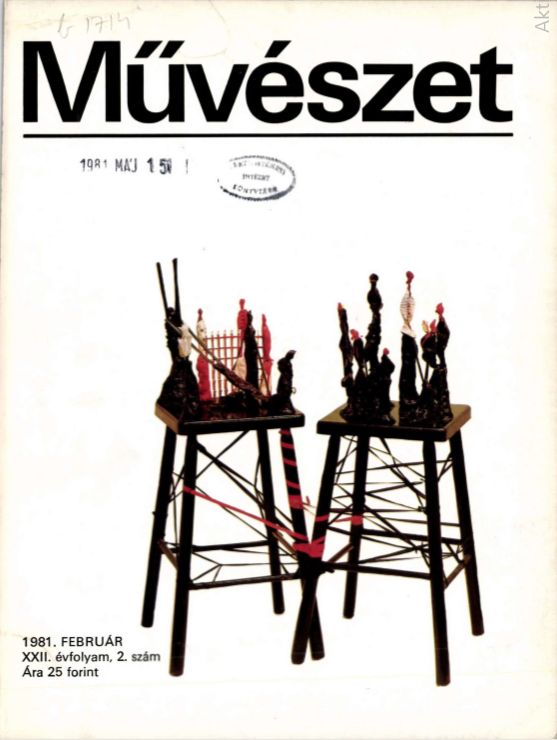
Cover of the 1981/2 issue of the Művészet, in which the heated debated started over the Tendencies. Courtesy of the ADT (ArcanumDigitheca).
While P. Szűcs was an art historian aligned with the state-apparatus, she could feel that it had betrayed the project of creating a socialist high art by giving space to underground and anti-socialist tendencies. From her perspective, the position of the HUFAA and the underground tendencies were only seemingly conflictual, but in practice, they could co-exist without major conflicts. This unexpected—but actual—coexistence was even more frightening for P. Szűcs, since she had built her career upon proving that it is possible to create high art under socialism. The expansion of neo-avant-garde art, defined in a political and rather than an aesthetic way, clearly pulled the rug from under her legs. Her approach (namely, that she was ready to co-operate with the state-socialist regime for the sake of producing a higher stage of aesthetic quality) was questioned both by the artists and art historians of the neo-avant-garde (for whom aesthetic standards were irrelevant), and by the state-apparatus that tolerated this expansion.
By highlighting P. Szűcs’s motivations to create a high art under socialism, it becomes clear why she used “sociological” as a pejorative term when describing the Tendencies exhibition organizers. She accused the organizers of applying only sociological criteria in their exhibitions and therefore of being “ideological.” She went even further by declaring that if the organizers aimed to maintain their intellectual autonomy and independence, they should engage with aesthetic criteria. She made a complete shift by promoting profoundly anti-socialist values (such as the intellectual autonomy and aesthetic independence from social formations) while aligning with the nominally socialist regime. Her essay considers the standards of good art as universal and pre-given, “political” as an insult, and “professional” expertise as a value in itself. This argumentation resonates well with the phenomenon described by Iván Szelényi and György Konrád in their work on the intellectuals’ road to class power.(György Konrád and Iván Szelényi, The Intellectuals on the Road to Class Power (New York: Harcourt Brace Jovanovich, 1979).) In the early 1970s, they argued that under state-socialism, intellectuals and technocrats (and not the formally ruling working class) are monopolizing the state-infrastructures, and with the help of these they spread their situated knowledge as a universal one. P. Szűcs’s intellectual project fit exactly into this scheme: she attempted to demonstrate that it is possible to produce a bourgeois high art according to universal standards even under state-socialism, but this approach did not take into consideration anything from the local context. In her essay, she categorizes the exhibited artists as good and bad ones (Béla Kondor falls into the former category, while Miklós Erdély into the latter), without defining the criteria of her judgments.
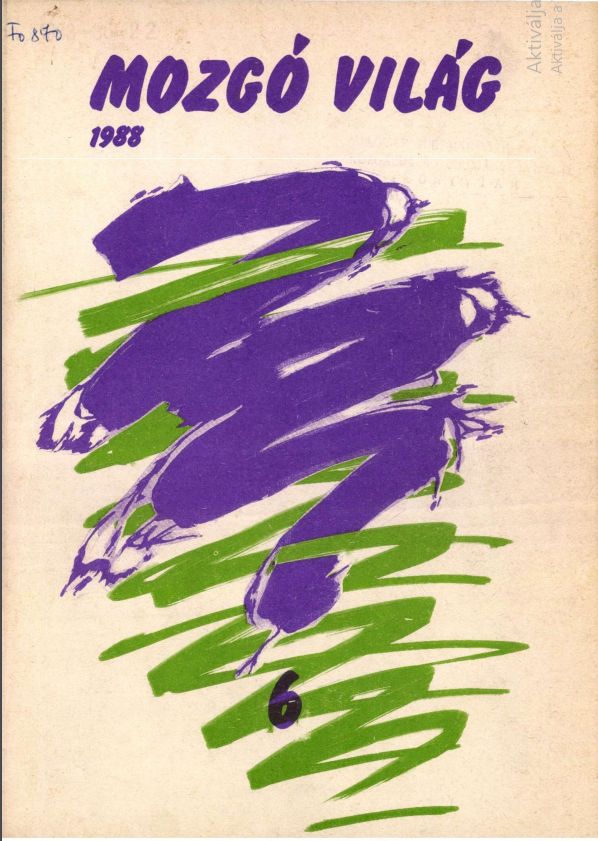
12. Cover of the journal Mozgó Világ (Moving World) from 1988. The journal was edited by art critic Julianna P. Szűcs, who was deeply involved in the debates around the Tendencies. This cover is illustrated by Tamás Hencze who exhibited in two shows of the exhibition series. Courtesy of the ADT (ArcanumDigitheca).
Three years later, P. Szűcs would implement her criticism outlined in the Tendencies-debate. In 1984, she became the editor in chief of the monthly Mozgó Világ (Moving World), after the politically loaded dismissal of her predecessor. After this scandalous change, the monthly had to face an extended intellectual boycott. P. Szűcs’s project was to make a better journal than the previous one, and she created the most defining editorial program of late-socialist Hungary.(Julianna P. Szűcs, “Tisztelt Igazolóbizottság!” Mozgó Világ 4 (1990), 53–61. P. Szűcs’s professional agenda was characterized similarly by her opponent, Péter György. Interview with Péter György, May 14, 2020.) As she synthesized her position: “value and beauty, excellence and depth do not obey the frame of reference of opposition and power, culture and counterculture, prohibition and support.”(P. Szűcs, “Tisztelt Igazolóbizottság!”) P. Szűcs was never ashamed of her elitism, but rather of her collaboration with the regime since her standpoint regarding the purely aesthetical definition of good art was shared by the other actors of the field.
Politicizing and Depoliticizing the Debate
There was only one person who publicly confronted P. Szűcs’s regarding Tendencies: Péter György, the assistant professor of the Department of Aesthetics at Eötvös Loránd University. He was loosely associated both with the emerging dissident movements and with the neo-avant-garde circles and had nothing to lose: István Szerdahelyi, the vice-editor in chief of the journal Kritika, encouraged him to publicly confront P. Szűcs.(Interview with Péter György. May 14, 2020.) In his essay, György set P. Szűcs up as if she was arguing for, and not against, the “whose land, his art” principle. Thus, he could castigate her for her confrontational use of state and dissent—in other words, for precisely the same phenomenon that P. Szűcs had criticized. As he wrote, “In addition to religious toleration, it is really time to introduce artistic toleration. Otherwise, we get back to the Middle Ages.”(Péter György, “Akié a terület, azé a művészet?” Kritika 12 (1981), 7.)
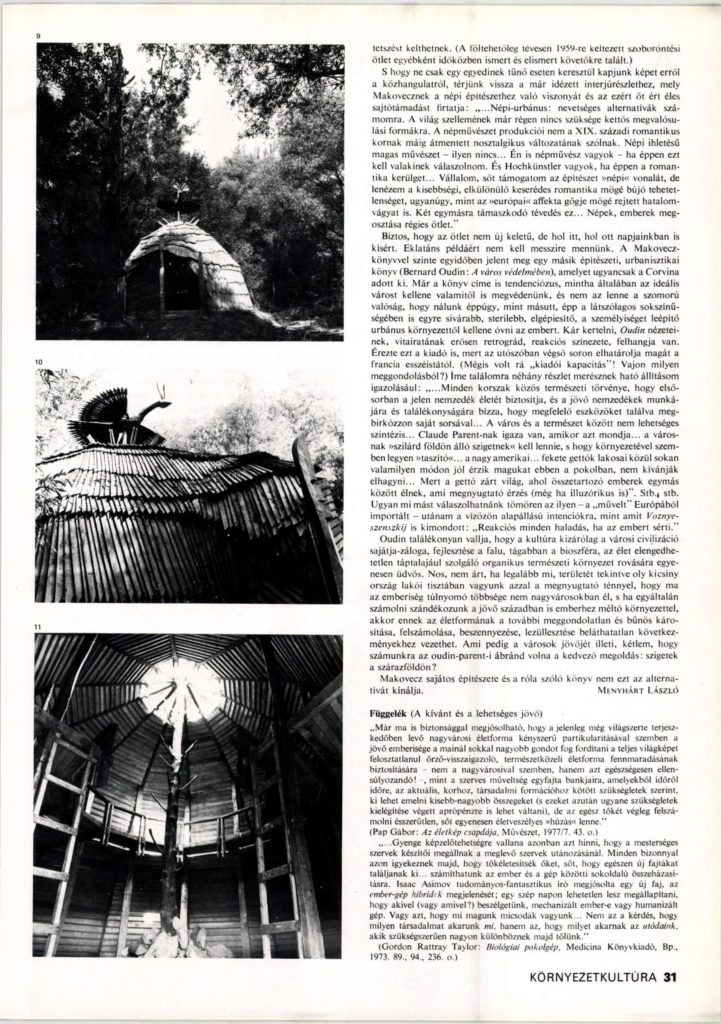
Article by László Menyhért in the 1980/12 issue of the Művészet on the architecture of Imre Makovecz that was cited by him in the debated around Tendencies as a positive contemporary trend. Courtesy of the ADT (ArcanumDigitheca).
Unlike P. Szűcs, György argued for the necessity of exhibiting neo-avant-garde art as a prerequisite for its scientific study. As he put it, “I want to know what I can choose between. I long for exhibitions and debates fought with openly aesthetic and not with political arguments. […] Exhibitions should be organized, even if artists sometimes make mistakes, they have the right to it. They can be wrong anytime because they are artists.”(György, “Akié a terület, azé a művészet?,” 7.)
György directly and fiercely confronted P. Szűcs, but he did not oppose her argumentation. He opposed her position as a critic close to the party-line. György’s position on the superior reality of art and intellectual knowledge resembles P. Szűcs’s: neither of them questioned the importance of artistic autonomy and the superiority of unbiased intellectual knowledge, and both felt that the other side threatened these values by politicizing art and art criticism. Their position could not be stated more clearly than the way György put it in his closing paragraph: “It is not true that whose is the land, his is the religion. It is not a matter of religion, but of aesthetics and sociology.”(György, “Akié a terület, azé a művészet?,” 7.)
In contrast with these two art critics, who shared similar views on the superior reality of artists and intellectuals, the art historians who were forced to participate in the press-debate were much more unwilling to engage with any position. Árpád Tímár and Péter Kovács (the vice president of the HUFAA) were trying to avoid any substantive debate.(Árpád Tímár, “Másról vitatkozunk,” Kritika 1 (1982), 13.; Péter Kovács, “Csatazaj,” Kritika 1 (1982), 14.) Both were associated with the HUFAA’s Section of Art Critics, and their objective was to save their necks by calming the debate down. Therefore, their articles possess almost no content, but this does not mean that they did not express an opinion. The emptiness of their arguments was rather a conscious political strategy to minimize losses. In contrast with György, they had things to lose: not only personal positions but also upward mobility within the HUFAA.

Article by Péter György on the Tendencies entitled “Whose Land, Their Art?”. Courtesy of the ADT (ArcanumDigitheca).
While P. Szűcs criticized the Tendencies series for risking aesthetic values by mixing politics into art, another, more fundamental criticism emerged in the wake of the exhibition series. In the monthly journal of the HUFAA, entitled Művészet (Art), the series was accused of being elitist and subordinate to Western artistic trends and concepts. This position was formulated by the journal’s editor László Menyhárt, who in his editorial argued that “One symptomatic phenomenon of our cultural life is […] the expansion of the so-called elite culture and of the avant-garde aspirations hitherto popular only among the initiated.”(László Menyhárt, “Világszám,” Művészet 2 (1981), 1.) His criticism was far from a clandestine one within Művészet. Two years earlier, the editor-in-chief of the journal, Gábor Rideg published an editorial entitled “Exchange Value and Use Value,” arguing that artists even in socialist society do not return society’s support, but rather strive only for recognition within the artistic field.(Gábor Rideg, “Csereérték és használati érték,” Művészet11 (1979), 2–3.) While this article borrowed Marxist terms in the title, its main observation coincided with fundamental critiques of the semi-autonomous artistic field.(Pierre Bourdieu, “The Field of Cultural Production, or: The Economic World Reversed,” Poetics 12:4–5. (1983), 311–356.)
This criticism towards Tendencies reflected deeply democratic and populist principles. Echoing Rideg’s editorial, Menyhárt criticized the curators of Tendencies not only for creating exhibitions incomprehensible for a larger audience, but also for uncritically importing Western artistic norms and trends.(Menyhárt, “Világszám,” 1.) These issues were entangled since artistic trends not emerging from local contexts—he argued—would be unsuitable for local audiences. Menyhárt even confronted the vice-president of the HUFAA, Péter Kovács with his own statement on the importance of being in sync with Europe.(László Menyhárt, “Szélesebb perspektívából,” Művészet 6 (1981), 48–49; Péter Kovács, “Új művészet 1970-ben,” Művészet 10 (1980), 14-15.)
This criticism towards developmentalist attitudes emerged not from post- and decolonial traditions, but rather from the local national-populist intellectual heritage. From Menyhárt’s perspective, the uncritical implementations of Western trends were polluting national traditions, considered by him to be organic structures.(Menyhárt, “Világszám,” 1.) Two years later, Menyhárt formulated his position even more clearly: “It is unfortunate to discuss the development of art history in analogy with sport competition. But if you are already referring to our backwardness, I feel that our backwardness to our own possibilities, national culture and traditions is a much more serious issue.”(László Menyhárt, “Az ottfelejtett stafeláj. Beszélgetés Paizs Lászlóval,” Művészet 5 (1983), 22–27.) From his perspective, Socialist Realism was as bad as the semi-peripheral avant-garde internationalism because neither of them relied on local traditions,(László Menyhárt, “A kutya ugat, a karaván halad,” Művészet 9 (1983), 44-47.) and their only viable alternative was an art built on the peasant, folk heritage.(László Menyhárt, “Alapkérdések, alapkutatások,” Művészet 12 (1980), 27–31.) At the same time, for the Westernizers of the art scene (such as the organizers of Tendencies), this criticism was not only dangerous but also ridiculous because it was not in dialogue with the vocabulary of Western artistic trends. According to Péter György,(Interview with Péter György by the author, May 14, 2020.) even Julianna P. Szűcs was trapped in a two-front war, in which she struggled both against the aberrations of avant-garde, and against the socially-engaged critiques of Művészet.(At the same time, it is important to emphasize that Művészet as the journal of the HUFAA was not completely independent from the Union’s structures. It also published positive reviews on some of the Tendencies exhibitions, even if always in the back of the journal. Even more importantly, the curators of Tendencies could put together a special issue in the 1980/10 issue of Művészet about the exhibition series at the request of editors. See: Péter Sinkovits, “Posztkonceptuális tendenciák,” Művészet 8 (1981), 57–58; Correspondence between Gábor Rideg and Eszter Gábor (1979), Archives of the HUFAA, Budapest.)
Conclusions: State as a Heterogeneity
While Tendencies provoked serious professional debates, it had little political effect. Only a second-class cadre, Mihály Kornidesz, the Head of the Department of Education and Culture at the Central Committee of the Hungarian Socialist Workers’ Party, mentioned it in his public speech, delivered at the 1981 General Assembly of the HUFAA. He stated: “We penalize people in factories for wasting eight or ten thousand forints […] and in our exhibition spaces we sometimes present the Big Nothing for 60-80-100-120 thousand forints.”(Mihály Kornidesz, “A művészet hivatása, a művészek felelőssége,” Művészet 9 (1981), 1-2.) Here, we see a criticism clearly no longer fueled by aesthetics, but by the economic rationality of Hungary’s 1980s austerity policies.
Since economic rationality seemed to override any aesthetic, political, or ideological expectations towards cultural producers, it widened the space for different factions to speak in the name of the state. This is exactly what happened in the case of Tendencies, in which both the organizers, and their elitist and populist critics, represented different parts of the state. There was no state apparatus to make a final judgment among their competing narratives. The exhibition series was far from an avant-garde coup d’état, but instead signaled the strengthening of a new faction of cultural producers that provoked new conflicts. A large proportion of these struggles happened within the infrastructure of the Union, since not only was the exhibition series organized by its section, but also one of its most fundamental critiques was published in the Union’s journal. It is also important to recognize that these factions were not competing merely for the representation of the state, but also for its material and financial resources, which were narrowing in the 1980s.
Finally, the analysis of the debates around the Tendencies series highlights how a profoundly socialist and populist art criticism existed under state-socialism in the pages of Művészet. This criticism—referring tofm the local peasant culture to confront the organizers with their elitism—was not taken seriously in its own time and was completely erased by post-socialist art histories. While the key figures of this criticism were removed from the journal after 1989 and typically shifted towards the political far-right, this cannot be an excuse to forget their work based on profoundly democratic principles. In Hungary today the debates on refusing or accepting state-subsidies is more heated than ever, and the debates over Tendencies have an important lesson to teach: they remind us that there is no such thing as a homogenous state with a unified will, and that moral choices are not purely shaped by the moral force of individuals, but rather by the actors’ social situation.
Acknowledgments: In 2020 Kristóf Nagy is a recipient of the Hungarian Ministry of Human Capacities’ Ernő Kállai fellowship for art historians and art critics.
Other articles in the issue include:

